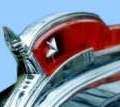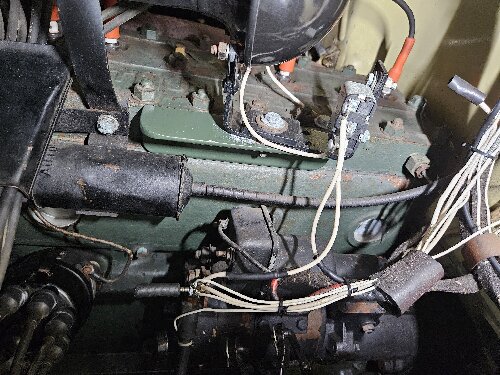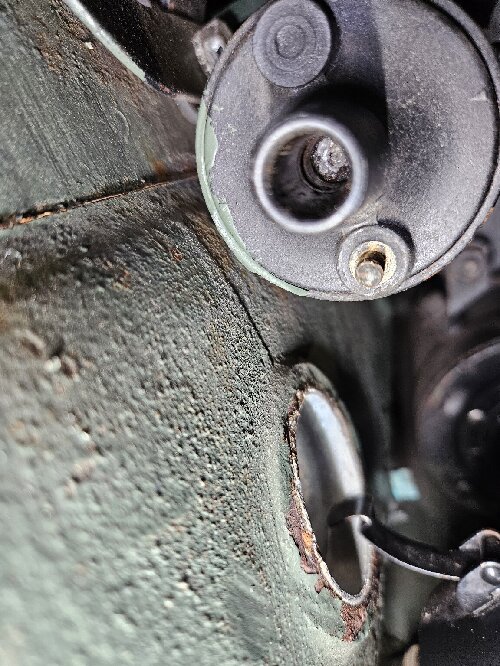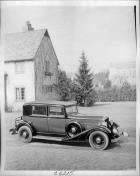|
Re: No Start, no Spark help
|
||||
|---|---|---|---|---|
|
Home away from home
|
Have you visually inspected your rotor, cap, and points and checked the point gap?
With the distributor clip off in the second picture it looks like you might have.
Posted on: 2024/9/5 18:34
|
|||
|
||||
|
Re: No Start, no Spark help
|
||||
|---|---|---|---|---|
|
Quite a regular

|
Yes, rotor, points, distributor cap and point gap all good. Car was running fine until I stopped for gas and it would not restart. I may just change them all out anyway while I have everything apart and testing things out.
Posted on: 2024/9/5 18:44
|
|||
|
Joe L
|
||||
|
||||
|
Re: No Start, no Spark help
|
||||
|---|---|---|---|---|
|
Home away from home
|
Do a thorough check of the primary system with a voltmeter. Power to your points with ignition on? Then trace through to your coil.
Don't use a voltmeter on the secondary system as you will damage it.
Posted on: 2024/9/5 18:56
|
|||
|
1955 400 | Registry | Project Blog
1955 Clipper Deluxe | Registry | Project Blog 1955 Clipper Super Panama | Registry Email (Parts/service inquiries only, please. Post all questions on the forum.) service@ultramatic.info |
||||
|
||||
|
Re: No Start, no Spark help
|
||||
|---|---|---|---|---|
|
Home away from home

|
Quote:
6) What happens if the condenser is a mismatch for other components? Just poor performance and/or premature failure of the points? A capacitor compensates for voltage peaks. A malfunctioning or incorrectly sized capacitor will cause premature wear of the points. Ignition problems, an engine that won't start and rough running are symptoms of bad points and a malfunctioning capacitor. Attach file:  capacitor.jpg (175.96 KB) capacitor.jpg (175.96 KB)
Posted on: 2024/9/5 19:09
|
|||
|
The story of ZIS-110, ZIS-115, ZIL-111 & Chaika GAZ-13 on www.guscha.de
|
||||
|
||||
|
Re: No Start, no Spark help
|
||||
|---|---|---|---|---|
|
Home away from home

|
-> How to test a capacitor with a multimeter (make sure that the points are open).
Posted on: 2024/9/5 19:22
|
|||
|
The story of ZIS-110, ZIS-115, ZIL-111 & Chaika GAZ-13 on www.guscha.de
|
||||
|
||||
|
Re: No Start, no Spark help
|
||||
|---|---|---|---|---|
|
Just can't stay away
|
Does the distributor have a resistor rotor in it? If so, that will need to be checked. I (for better or worse) get rid of them. Looks like you have resistor wires on anyway. I had the same problem as you about 35-40 years ago at the gas station, filled up and no start... no spark. Then, as now, I keep a spare points and condenser in the glove box....it was the condenser. But, that's not saying your problem is. Good luck, PB.
Posted on: 2024/9/5 19:29
|
|||
|
||||
|
Re: No Start, no Spark help
|
||||
|---|---|---|---|---|
|
Quite a regular

|
I think I've answered my questions 2 & 3. Looks like the bottom of the coil is detachable to reveal the negative terminal connection and also allow the removal of the coil body. If that's true, I can test both primary and secondary circuits on the bench. I'll try that before attempting to remove the armored cable connection at the ignition switch.
packardinfo.com
Posted on: 2024/9/6 6:47
|
|||
|
Joe L
|
||||
|
||||
|
Re: No Start, no Spark help
|
||||
|---|---|---|---|---|
|
Forum Ambassador
|
If the capacitor did not suddenly fail, something else that can happen fairly quickly resulting in no spark is points burning or oxidizing because the key was left on when the points were in a closed position. Sustained current flow thru the coil and closed points causes them to overheat which can form an insulating coat over the contact surface. That issue can be a too common occurrence in cars with ign switches having only two positions and may be the reason so many radios of the era were wired with constant power -- so they could be played when the car was parked without having the ign switch turned on.
To quickly check the coil for spark you can disconnect the high tension wire from the distributor center hole and place the end near the block -- maybe 1/8" or so away. Also disconnect the primary wire coming from the coil at the distributor terminal and then scratch the wire terminal against something well grounded on the block. Make sure it is a good ground connection and not just paint. As you break the connection between wire and ground the coil should produce a spark jumping to the block at the end of the high tension lead. CAUTION: If you do this test use something insulated to hold the wire terminal and not your bare fingers as you touch it to the block. If you use bare fingers there is every chance you will get an unpleasant jolt.
Posted on: 2024/9/6 10:49
|
|||
|
Howard
|
||||
|
||||
|
Re: No Start, no Spark help
|
||||
|---|---|---|---|---|
|
Home away from home
|
Also, insulated against 20kV. E.g. not pliers with plastidipped handles (ask me how I know).
Posted on: 2024/9/6 14:01
|
|||
|
1955 400 | Registry | Project Blog
1955 Clipper Deluxe | Registry | Project Blog 1955 Clipper Super Panama | Registry Email (Parts/service inquiries only, please. Post all questions on the forum.) service@ultramatic.info |
||||
|
||||










